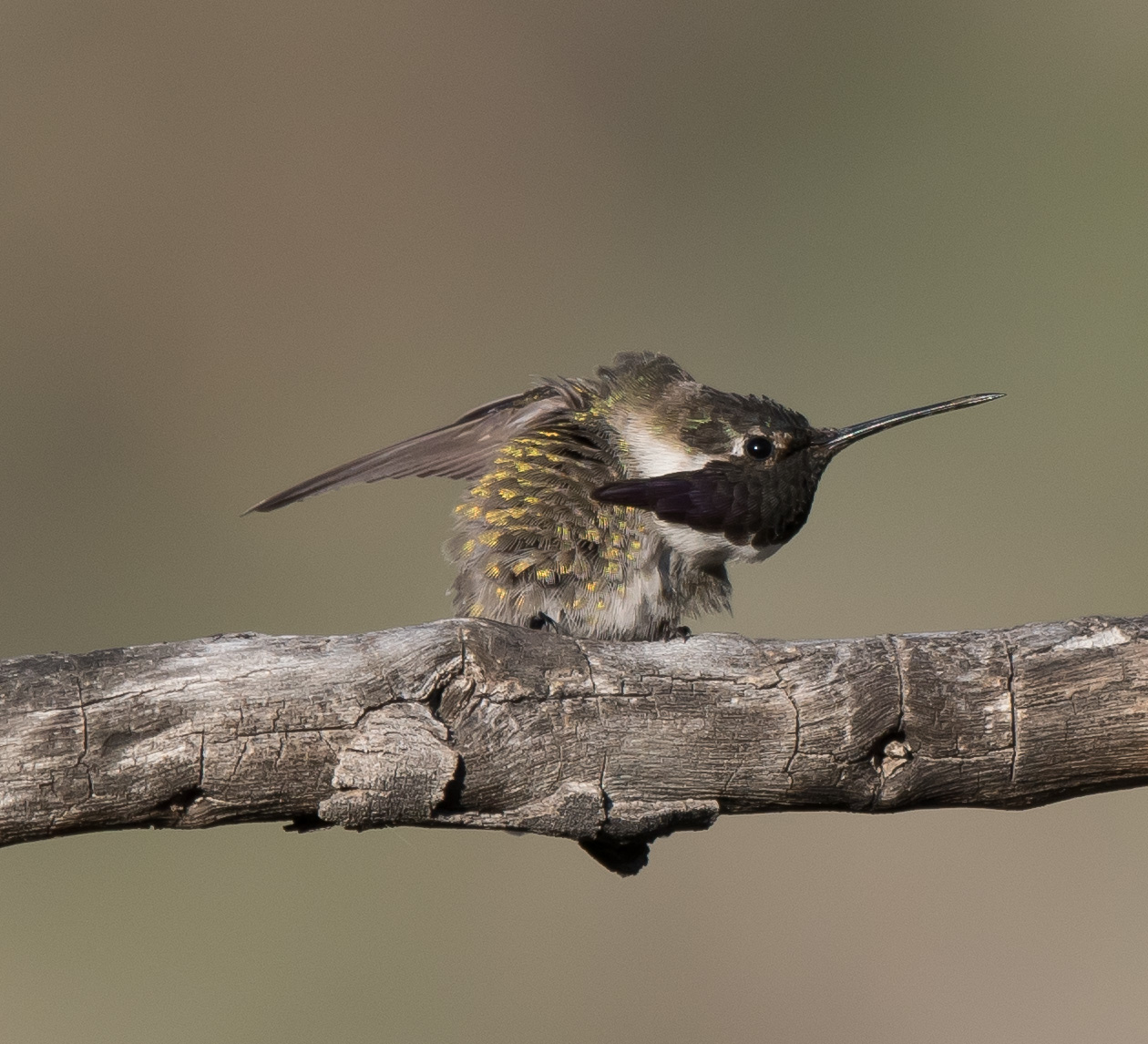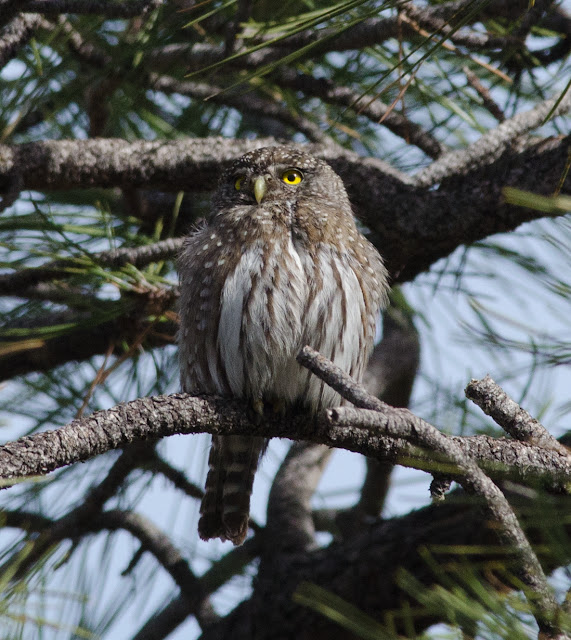On Sunday March 24th, I had the honor to take a couple of gentlemen from Ohio out to the 'Thrasher Spot' west of Buckeye. Brian and Larry were interested in trying to find some thrashers, Sage and Le Conte's. We did get a bit of a late start, but we also knew that they definitely would not see either if we did not go. It was very quiet when we arrived and as we made out way further out in the desert scrub I was starting to think we may have been too late. But then a male Black-tailed Gnatcatcher made his appearance and that was a new bird for them, so I know it would not be a total loss. Finally we found some thrashers and 3 of them perched up in a leafless bush and allowed us some time to circle around them for better lighting to confirm that 2 of them were Sage Thrashers, one of the target birds, and the third was a Bendire's. We knew that none of the 3 were the Le Conte's ase on bill shape and size. Then as they flew to the ground, we started to follow them as they quickly ran from one desert bush to another, and soon discovered there were more than just 2 and during this time, we actually did catch sight of a Le Conte's Thrasher with its pale coloration and long and sharply down-curved bill. Unfortunately, it was not going to allow any photos for us this day, so we had to settle for photos of the Sage Thrasher only.
Sage Thrasher
Not the birdiest spot around, but during our short stay we got 2 of their target birds and a bonus 3rd bird, the gnatcatcher in the process. From there we took a bit of a detour to the Lower River Road ponds and found a much larger variety of birds. It was at this place that the Northern Rough-winged Swallows were just being downright passionate about having their photos taken. So what was I to do? I just could not ignore them. It may not be the flashiest or most colorful swallow, but they are one that is very common in Arizona in just about all seasons and one species that a novice birder learns to identify very quickly in AZ.
Northern Rough-winged Swallow
Northern Rough-winged Swallows
Northern Rough-winged Swallow
Northern Rough-winged Swallow, and we have lift-off!
One more thing that I did early on Sunday before meeting up with Brian and Larry was to scout the Scottsdale Community College for Burrowing Owls. So I made trip to that location around sunrise and I found my Burrowing Owl and along with that a Gambel's Quail and a Savannah Sparrow in the early light of dawn. The owl location is needed for a future guest that is arriving to see birds in Arizona. I know of other locations, but was interested in some place a bit further north to we can hopefully save some driving time and cover more spots. So here are my photos of these 3 birds in the warm early light of sunrise.
Burrowing Owl (taken through a chain-linked fence)
Savannah Sparrow
Gamble's Quail
Another awesome day of birding!






















































